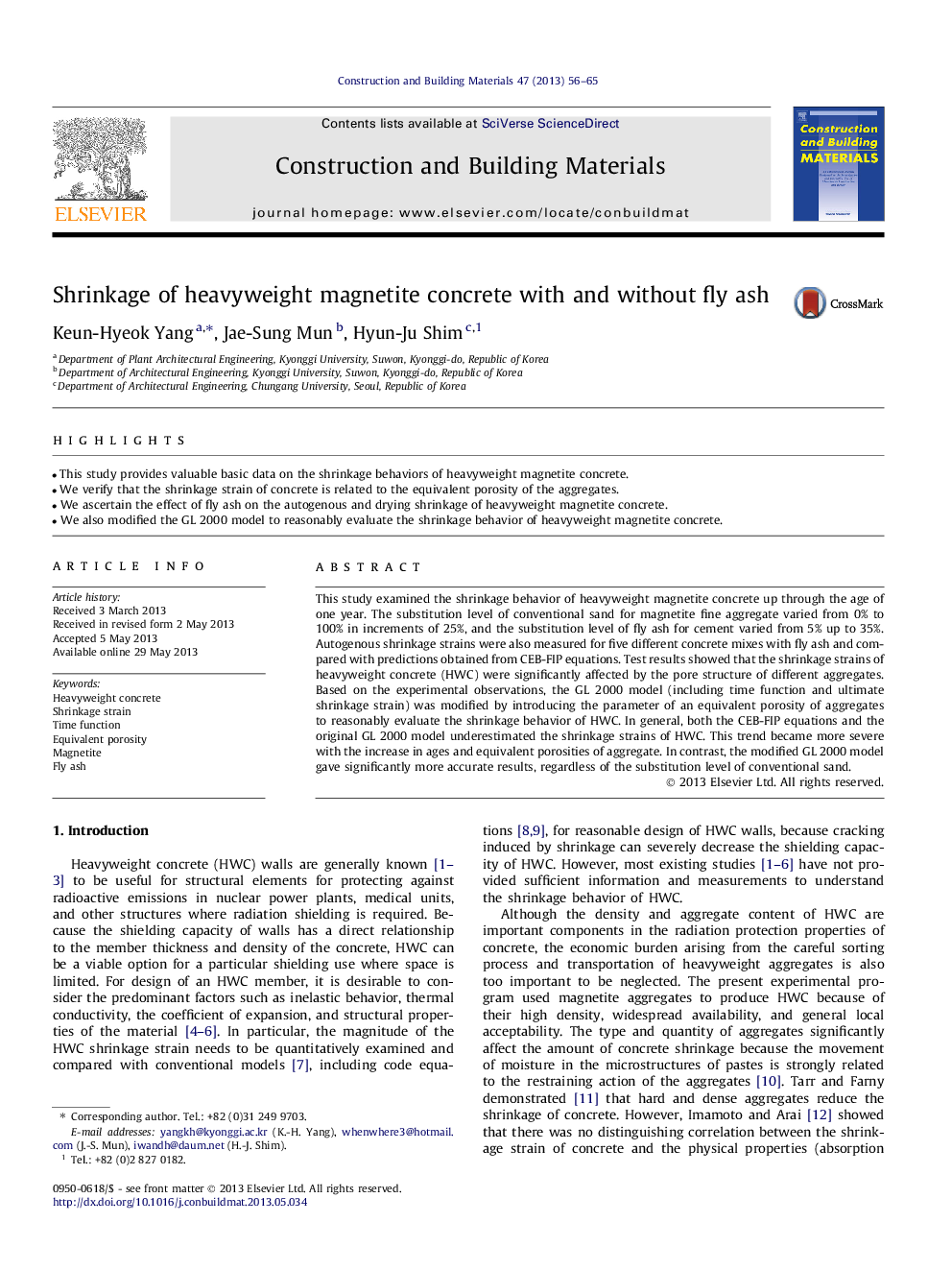| Article ID | Journal | Published Year | Pages | File Type |
|---|---|---|---|---|
| 6724999 | Construction and Building Materials | 2013 | 10 Pages |
Abstract
This study examined the shrinkage behavior of heavyweight magnetite concrete up through the age of one year. The substitution level of conventional sand for magnetite fine aggregate varied from 0% to 100% in increments of 25%, and the substitution level of fly ash for cement varied from 5% up to 35%. Autogenous shrinkage strains were also measured for five different concrete mixes with fly ash and compared with predictions obtained from CEB-FIP equations. Test results showed that the shrinkage strains of heavyweight concrete (HWC) were significantly affected by the pore structure of different aggregates. Based on the experimental observations, the GL 2000 model (including time function and ultimate shrinkage strain) was modified by introducing the parameter of an equivalent porosity of aggregates to reasonably evaluate the shrinkage behavior of HWC. In general, both the CEB-FIP equations and the original GL 2000 model underestimated the shrinkage strains of HWC. This trend became more severe with the increase in ages and equivalent porosities of aggregate. In contrast, the modified GL 2000 model gave significantly more accurate results, regardless of the substitution level of conventional sand.
Related Topics
Physical Sciences and Engineering
Engineering
Civil and Structural Engineering
Authors
Keun-Hyeok Yang, Jae-Sung Mun, Hyun-Ju Shim,
